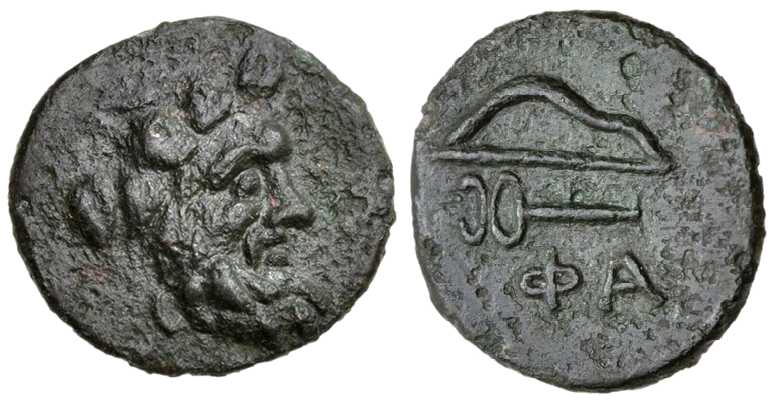| 325 BC - 200 BC |
Phanagoria
Bosporus Cimmerius
Φαναγόρια Κιμμέριος Βόσπορος
Φαναγόρια Κιμμέριος Βόσπορος
| AE 15 |
SHH 3910 |
 |
| Parameter Obverse Reverse Notes Reference |
1.96 g 14.4-15.8 mm 5:00
o'clock VF t = 0.9-1.7 mm ρ = 8.34 g/cm^3 σ(240 Hz) obv. 4,1-5.9, rev. 4.2-6.0 MS/m Head of Pan right, wreathed with ivy. Bow above caduceus right; ΦΑ beneath. The caduceus is normally an arrow. MacDonald (2005) comments that on some specimens the arrow nock and fletching are so large that the arrow resembles a caduceus (kerykeion). Certainly, on some examples, this is the case (e.g. CNG 107E/32), but on those examples the arrow tip is clearly angled to represent a point. On the present coin, the bottom of the kerykeion is clearly a straight line, resembling a base, rather than an arrow tip. Whether this was a mistake of the engraver is uncertain, but it is clear that the device here is a kerykeion, not an arrow. Anochin ---; BM BS ---; Copenhagen IV ---; Fitzwilliam II ---; Lindgren ---; MacDonald 157 (140-108 BC); Sear Greek ---; Stancomb --- |